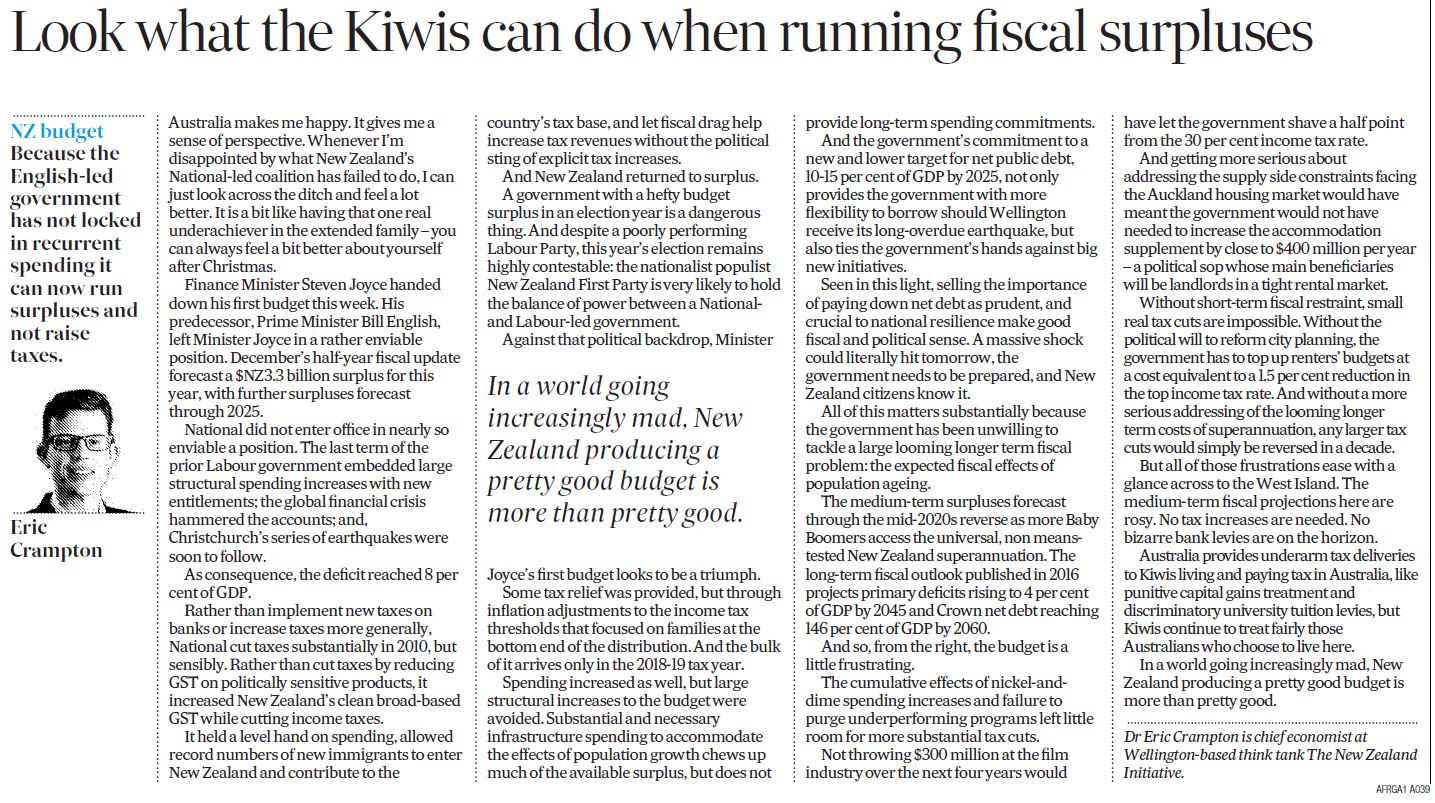The economics of it are pretty average.
The increase in the accommodation supplement is likely to flow through primarily to landlords. Radio NZ has reported on work at MSD showing relatively little effect of a prior increase in the accommodation supplement on rents, but the basic tax/subsidy incidence on this stuff depends on market conditions. If supply is more elastic than demand, meaning that a given increase in rent does more to stimulate new construction of rental properties than it does to decrease demand for rental accommodation, then the accommodation supplement is good for low-income tenants receiving it. If you run your study when regulatory barriers to building aren't as binding, you'll find that increases in charged rents are pretty minor. But if you extrapolate from that period to now, you just might be making a mistake.
I also worry that there's not been quite enough attention paid to the long term fiscal outlook, where the costs of an aging population drive us into substantial net debt from 2030; to effective marginal tax rates, which barely changed; or, to the small-scale fiscal discipline that would avoid cash giveaways to the film industry in favour of measures addressing either of the two prior points.
The changes to the tax thresholds only partially adjust for inflation since they were last changed in 2010. The increase in the threshold for the 17.5% rate overadjusts for inflation, but the 30% rate's threshold was underadjusted, and the 33% rate's threshold wasn't touched.
My piece at the Spinoff, last week, covered what would have been needed for inflation adjustment to those thresholds:
Suppose that the government adjusted the tax thresholds to account for wage inflation since 2010. The top income tax rate would then kick in around the $83,000 level, the 30% rate would come in at around $57,0000, the 17.5% rate would apply from about $17,000 and the bottom rate would apply below that. Treasury’s tax calculator says this would cut just under $1.9 billion from government revenues. For the same drop in government revenues, every tax rate could be cut by a percentage point and the 17.5% rate could drop by two points. Everyone would get to keep a greater fraction of the next dollar earned.If we rank options, here's my preference ordering:
- Adjust for inflation automatically by knocking income tax rates down by half a percentage point whenever accumulated wage inflation warrants it. Treasury's calculator provides the full-year costs of a one percentage point change in each of the tax rates. Whenever inflation gives the government an extra $740m in revenue through fiscal drag, cut each of the rates by a half point - at least on the current costings.
- Adjusting things this way means everyone sees a change in their marginal tax rate, with consequent dynamic benefits for growth. Adjusting the thresholds provides a big marginal tax change for a small group, and large inframarginal changes for everyone else.
- Adjust for inflation automatically through annual changes to the tax brackets.
- Let politicians pretend inflation adjustments are tax cuts in an election year. We're probably stuck with this one because politicians really really like being able to announce tax cuts in election years.
And that gets us to the pure politics lens, which has the budget as a triumph. That lens is boring and has been done to death already.
If we run it instead through a "what's the best we could have expected given that it's an election year and given the political constraints" lens, it's not too bad. Just consider how much better things are here than in Australia - the subject of my Australian Financial Review piece on the budget.


No comments:
Post a Comment